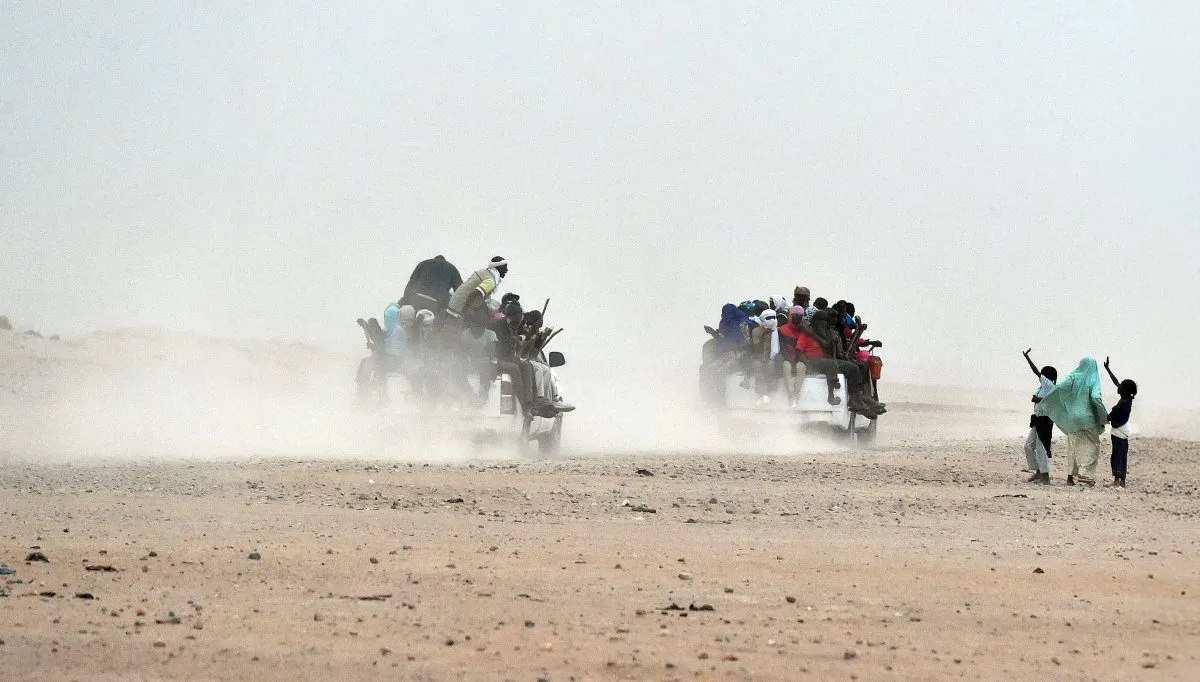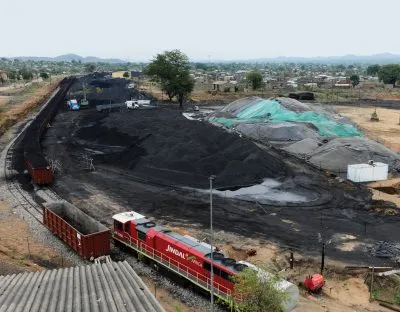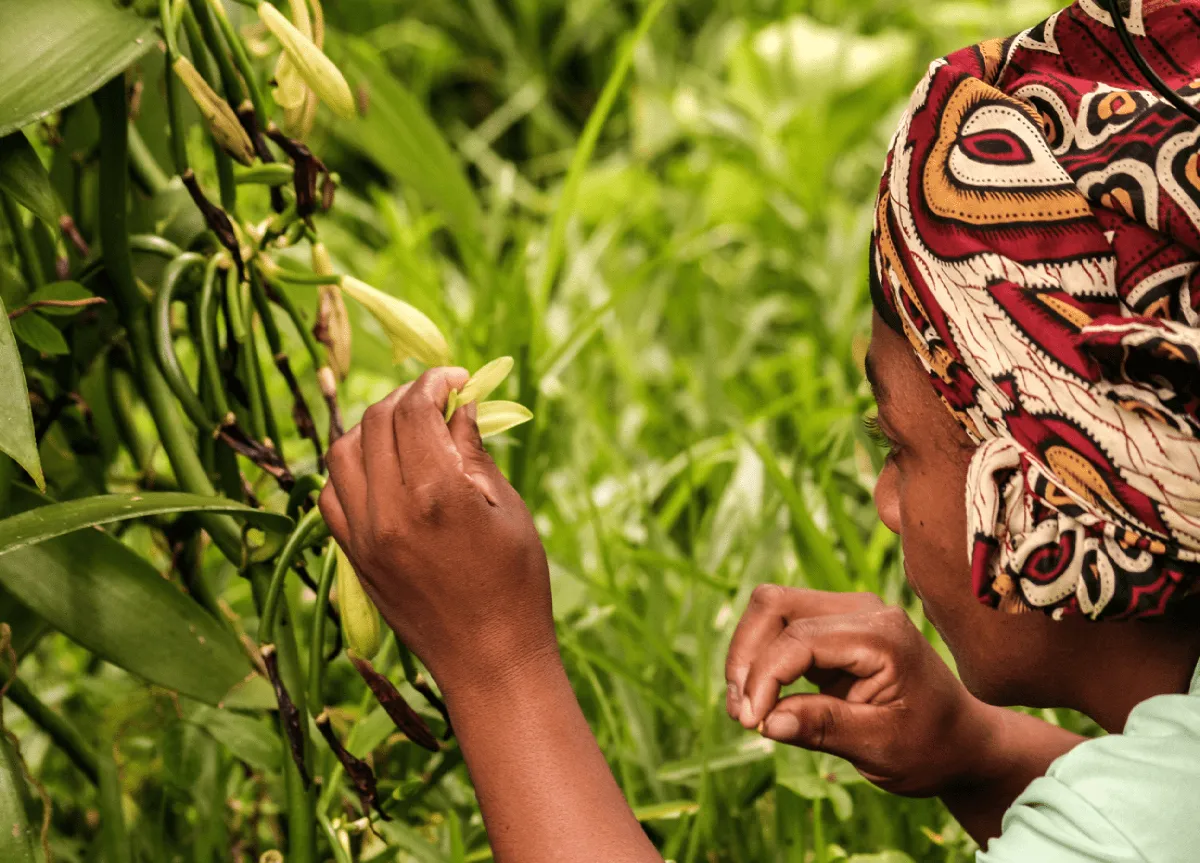In response to the economic downturn precipitated by the Covid-19 pandemic, countries sharply raised their government expenditures to fend off humanitarian and health emergencies in the face of a concurrent drop in government revenues and shocks to global demand and supply.
Consequently, levels of sovereign debt increased significantly around the world. Among developing economies, public debt (both domestic and external) increased by more than 40% to $26.9trn over 2019-20. The number of countries with public debt exceeding 60% of GDP increased from 45 to 71 over the same period, the fastest-ever single-year jump.
Since then, the risk of debt crisis in the Global South – and especially in Africa, where interest payments on external debt have become one of the largest expenditure items on national budgets – has dominated discussions at the biannual meetings of the World Bank and International Monetary Fund (IMF).
However, for Africa, which has been contending with financial repression for decades, the disproportionately elevated threat of debt crisis is largely the consequence of entrenched inequalities in the international financial architecture. These disparities have, for years, subjected African sovereign and corporate entities to growth-crushing and default-driven borrowing rates.
The effects of this imbalance have been far-reaching: exacerbating the climate crisis in Africa; undercutting investment in growth-enhancing infrastructures; inhibiting the diversification of sources of growth; undermining the expansion of employment opportunities, and aggravating external imbalances, which have been major drivers of external liabilities.
Despite several decades of sustained engagement with the Bretton Woods institutions, 33 African countries are classified among the least developed in the world, according to the UN. In sub-Saharan nations, only three million new jobs are being created annually when 18m per year are needed to absorb new entries into the region’s labour market.
These inequalities are giving rise to global challenges that, in the absence of major reform to the international financial system that promotes equal access to affordable financing, will only worsen over time, including escalating climate crisis, and rising levels of poverty-induced cross-border migration.
The most recent World Bank-IMF Annual Meeting was held in Marrakesh, Morocco, in October 2023 – the first time in Africa over the last 50 years. There, IMF Managing Director Kristalina Georgieva recapitulated the difficulties confronting countries in the Global South in their engagement with the international financial system:
“I do hear the legitimate calls of African countries, not only African countries but countries also all over the world that are burdened by debt, especially painful to see when some of this debt is because of climate-related shocks, because of a problem these countries have done nothing to create,” she said.
In the latest edition of the IMF World Economic Outlook, published in January 2024, the Fund called for more efficient multilateral coordination and debt resolution to avoid debt distress in the face of limited progress toward a comprehensive debt restructuring framework that secures the commitment of all creditors, both public and private.
Evidently, the challenges of achieving debt sustainability in the Global South will likely dominate talks at the upcoming World Bank-IMF Spring Meetings in April. And Africa will likely be singled out as the main culprit, even though countries across the region adopted, at the height of the pandemic downturn, the least expansive fiscal or monetary stimulus measures.
Africa short-changed
More than any other region of the world, Africa has been short-changed by the international financial architecture that was born out of the 1944 Bretton Woods Conference.
According to the most recent debt statistics, around 60% of countries identified by the IMF as being in debt distress or most at risk thereof are African. To make matters worse, the four countries that have defaulted on their external debt are all in Africa (Chad, Ethiopia, Ghana, and Zambia).
However, today the disproportionately elevated risk of sovereign default faced by African countries is not a reflection of their fiscal proclivity, nor of macroeconomic policy malpractice, nor the result of government largesse in response to the pandemic or climate crisis.
According to the IMF Fiscal Monitor, African countries collectively spent $60bn in their Covid-19 responses (via liquidity support and forgone revenues), a paltry total compared to the record-breaking levels of resources deployed by the European Union and the US.
From 2020-21, the EU extended emergency relief to member countries amounting to $4.27trn, while the US extended $5.8trn over the same period. In the latter case, the exceptional support helped to sustain economic expansion, with US GDP growth reaching an annualised rate of 4.9% and 3.3% in the last two quarters of 2023, respectively. Moreover, the US is projected to be the fastest-growing advanced economy in 2024, with its GDP expected to expand by 2.1%.
In contrast African countries, which simply could not afford the same level of support, are yet to return to pre-pandemic trend growth.
Ethiopia, which was the latest African nation to default on its external debt, illustrates plainly the entrenched inequality of the international financial architecture and economic consequences of that imbalance.
After two decades of robust economic expansion that consistently saw Ethiopia feature among the world’s fastest-growing economies, the country’s growth rate has decelerated markedly over the past few years. IMF projections show that its GDP will expand by 6.2% in 2024, very strong for a country contending with a debt crisis, but much below the 10.8% annual growth that Ethiopia averaged over 2005-14.
Ethiopia makes for an especially interesting case study because it defaulted on its external debt when its debt-to-GDP ratio, the conventional metric used to assess a country’s level of indebtedness, was relatively low at around 33%, versus the continental average of 61%.
Contrast these figures with ratios in advanced economies, where the growth of sovereign liabilities in recent years has been astonishing. For instance, the UK’s debt-to-GDP ratio exceeds 101%, while that of Italy stands at 137.9%. The averages across the US and EU are 122% and 89.8%, respectively. Even though Africa’s population is more than twice the size of Europe, its combined debt (domestic and external) is $1.8trn, a fraction of the EU’s $14.1trn.
And yet, despite the magnitude of their sovereign debt, no European nation features on the list of countries that are either at risk of or are already in debt distress.
This is due, in part, to the fact that most European countries continue to enjoy investment-grade credit ratings. This has enabled them to borrow at disproportionately lower interest rates, even in the face of unprecedented monetary tightening.
Countries in Africa borrow on average at rates that are almost four times higher than those of the US and nearly eight times higher than those of Germany.
The apparent time-invariant debt sustainability enjoyed by advanced economies is also due to the fact that these countries can tap international capital markets in their domestic currencies.
This means they are not exposed to currency risks associated with the ‘original sin’ of global economics, whereas developing markets have historically only been able to place bonds in US dollars with international investors. Today, more than 95% of Africa’s debt is issued in foreign currencies, with the dollar alone accounting for more than 70%.
The original sin
Over the past several years that ‘original sin’, in conjunction with aggressive monetary tightening and dollar strengthening, have combined to exacerbate Africa’s macroeconomic management and debt sustainability challenges.
In addition to large-scale disorderly capital outflows triggered by the US Federal Reserve’s tightening cycle, the sharp appreciation of the dollar against African currencies dramatically increased external debt servicing costs across the region. According to the World Bank’s latest International Debt Report, African countries spent a record $112.3bn to service their external debt in 2022.
The incidence of a sharp depreciation of local currency on debt vulnerabilities is felt by all African countries, whether small or large. For instance in Nigeria, Africa’s largest economy, the naira has depreciated sharply, losing nearly 70% of its value since June 2023.
As a result, servicing interest rates on debt falling due has become even more challenging, necessitating extremely difficult fiscal trade-offs. Estimates show that interest payments could swallow more than 40% of the Nigerian government’s revenue in 2024.
As interest payments become one of the largest expenditure items on national budgets, governments have had to curtail other key expenditures, including critical social and public investment initiatives. This will inevitably undermine growth prospects and exacerbate unemployment and poverty rates.
This shift in the composition of government spending away from public investment is very costly, especially in a region where entrepreneurs have long singled out the chronic infrastructure deficit as a major constraint to growth.
This has consistently inhibited government efforts to crowd-in private investment to accelerate the diversification of sources of growth that would expand employment opportunities and strengthen the foundation of fiscal and debt sustainability.
Ripples from inequality
Africa’s total external debt remains marginal and poses no systemic risk to the international financial system. But it is naïve to think that the consequences of the inherent inequality of the current international financial system will forever be confined to Africa.
According to the UN’s International Organisation for Migration (IOM), more than 292,000 African migrants entered Europe in 2023, up from more than 189,000 in 2022.
More and more impoverished migrants are fleeing Africa to seek greater economic opportunities abroad, with many risking their lives in the process. Again according to the UN IOM, 3,968 African migrants died or went missing attempting to cross the Mediterranean last year. In March 2024 at least 60 people died as a boat spent about a week lost at sea after leaving Libya.
Attempts to create a ‘Fortress Europe’ with “small-boat-free seas” guarded by barbed wire and coastal patrols have not deterred the growing rank of young Africans from fleeing their homes, where they face widespread poverty, insecurity, and unemployment.
This is all exacerbated by financial repressions which constrain the fiscal space and impose impossible trade-offs on governments which have to choose between expanding opportunities for the growing youth entering the labour market every year and serving their external creditors.
Some institutions are taking steps in the right direction to lighten the debt load on low-income countries. The G20, for instance, has added a provision to debt contracts that would allow debt-distressed countries to extend maturities.
Other multilateral development finance institutions are increasing grant financing to debt-laden nations. These are welcome measures that will, hopefully, enable countries to draw in, at sufficient scale, the private capital necessary to accelerate the diversification of sources of growth and trade and meet the growing challenges of unemployment and climate change.
But more must be done structurally to alleviate the debt burden and address asymmetric risk perceptions to equalise access to affordable and patient capital.
Further reform should include putting an upper bound on interest payments, informed by the 1953 London Agreement on Germany’s war debt. This limited the amount of export revenues that could be spent on external debt servicing (public and private) to 5% to avoid undermining Germany’s recovery and reconstruction efforts.
Across Africa, interest spending has exceeded 10% of export revenues in over 18 countries. Such reform should also emphasise modernising the outdated system of Special Drawing Rights (SDRs, the IMF’s unit of account).
The allocation of SDRs should take into account population weights and bear in mind both the vulnerabilities of countries and the negative externalities of combustion-engine-powered economic growth.
The current allocation system, which is based on the quota amounts of each member country, is burdened by a stark colonial legacy and penalises energy-poor, low-income countries that pollute less than their developed-market peers, further reinforcing the inequalities of the international financial system.
After the outbreak of the Covid-19 pandemic and the avalanche of credit rating downgrades, which made it even more difficult for African countries to respond to the social and economic consequences of the crisis, French President Emmanuel Macron called for “fairer” financing rules for the region.
Reforming the system at this critical juncture, to fashion a global financial system that is fit for purpose in our modern, multipolar world and that serves all countries equally, is a matter of urgency.
Beyond sharing the benefits of global prosperity, a reformed global financial architecture will enhance the ability of countries across Africa to tackle global challenges such as climate change, economic and political fragmentation, and migration pressures to preserve more precious lives.
Want to continue reading? Subscribe today.
You've read all your free articles for this month! Subscribe now to enjoy full access to our content.
Digital Monthly
£8.00 / month
Receive full unlimited access to our articles, opinions, podcasts and more.
Digital Yearly
£70.00 / year
Our best value offer - save £26 and gain access to all of our digital content for an entire year!
 Sign in with Google
Sign in with Google 




